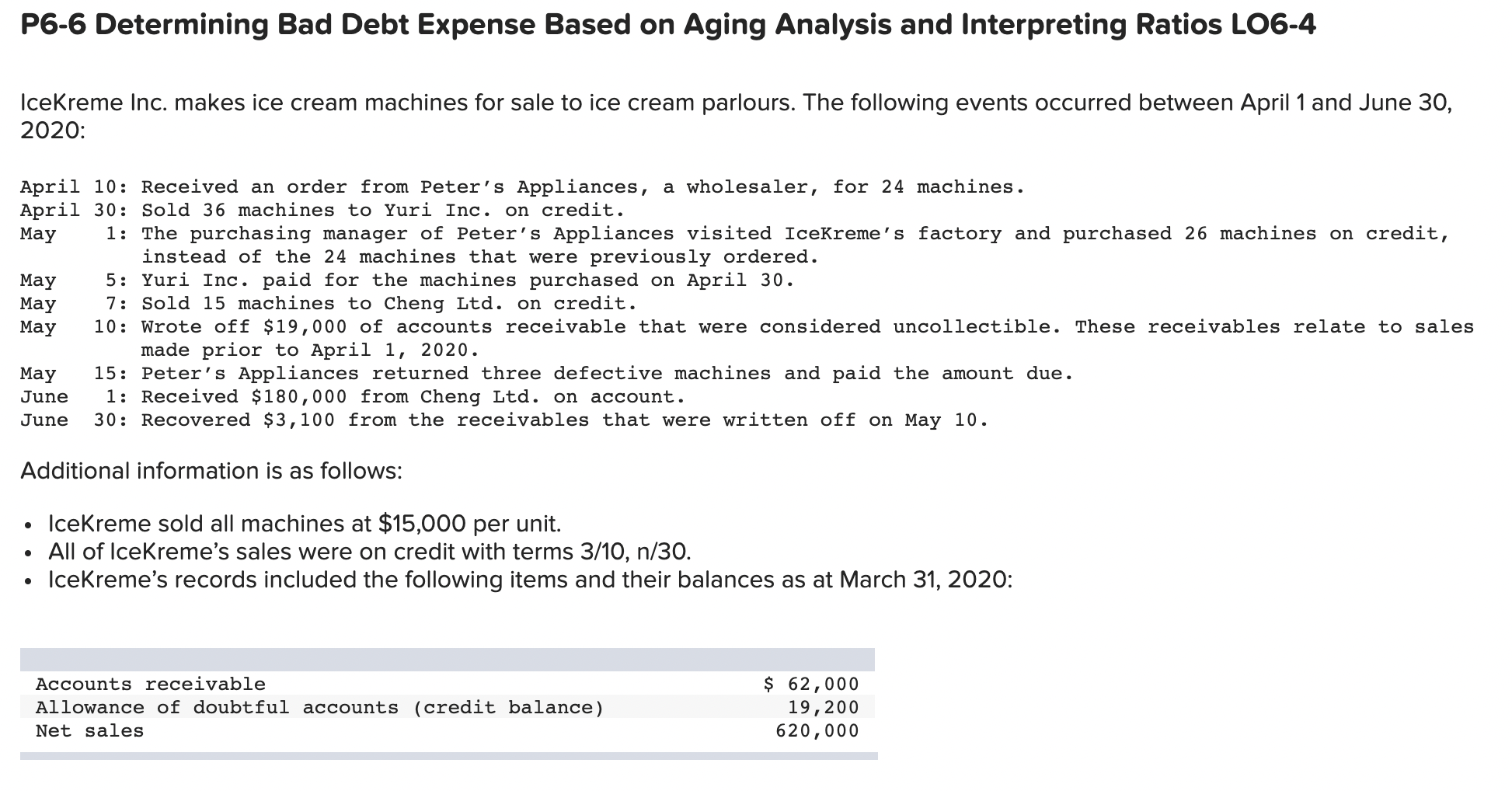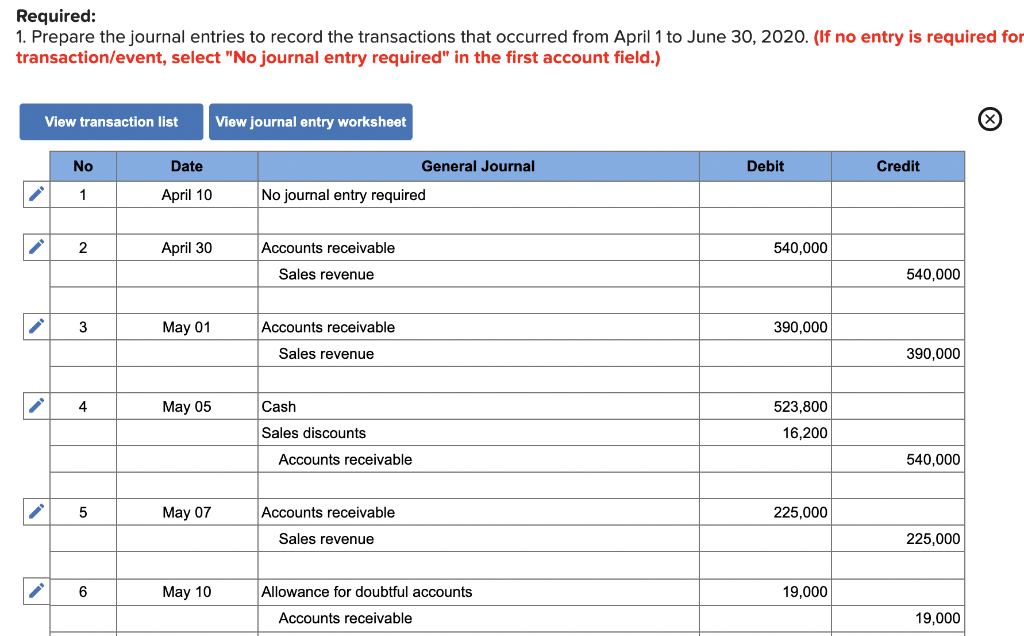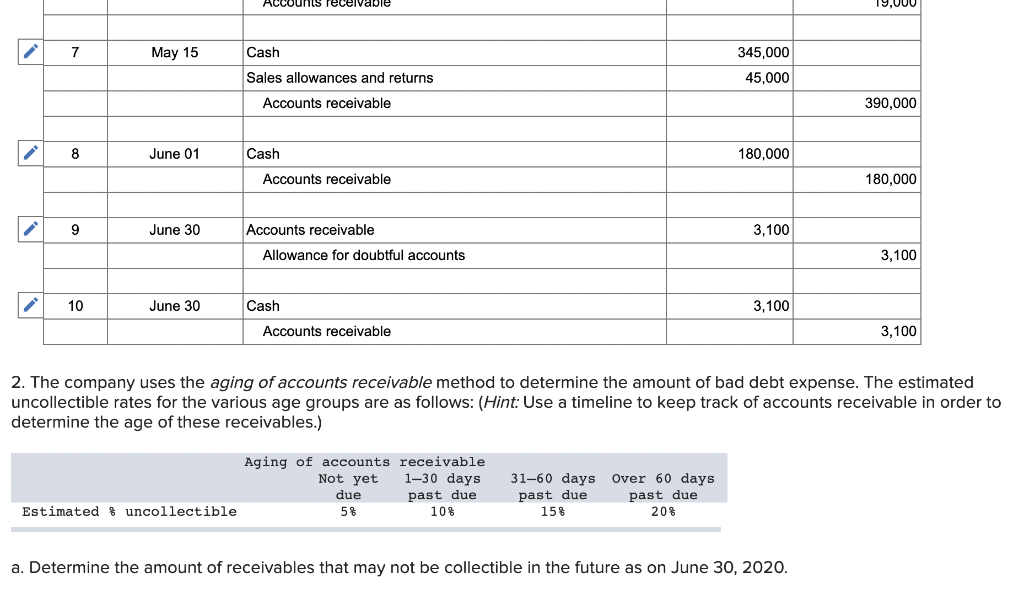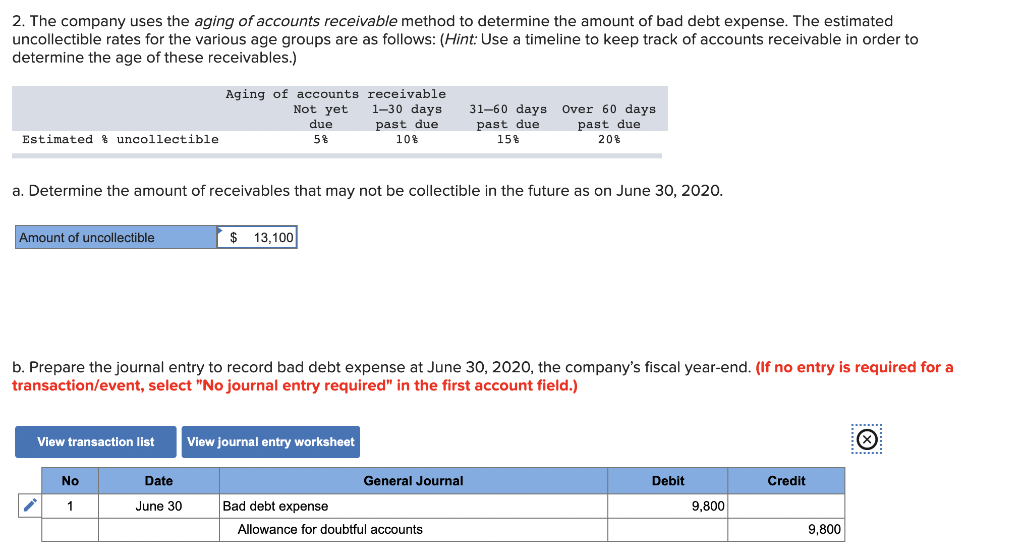Answered step by step
Verified Expert Solution
Question
1 Approved Answer
Please help me with question 3. The average collection period for fiscal year in 2020. P6-6 Determining Bad Debt Expense Based on Aging Analysis and
Please help me with question 3. The average collection period for fiscal year in 2020.





P6-6 Determining Bad Debt Expense Based on Aging Analysis and Interpreting Ratios LO6-4 IceKreme Inc. makes ice cream machines for sale to ice cream parlours. The following events occurred between April 1 and June 30, 2020: April 10: Received an order from Peter's Appliances, a wholesaler, for 24 machines. April 30: Sold 36 machines to Yuri Inc. on credit. May 1: The purchasing manager of Peter's Appliances visited IceKreme's factory and purchased 26 machines on credit, instead of the 24 machines that were previously ordered. May 5: Yuri Inc. paid for the machines purchased on April 30. May 7: Sold 15 machines to Cheng Ltd. on credit. May 10: Wrote off $19,000 of accounts receivable that were considered uncollectible. These receivables relate to sales made prior to April 1, 2020. May 15: Peter's Appliances returned three defective machines and paid the amount due. June 1: Received $180,000 from Cheng Ltd. on account. June 30: Recovered $3,100 from the receivables that were written off on May 10. Additional information is as follows: . . IceKreme sold all machines at $15,000 per unit. All of IceKreme's sales were on credit with terms 3/10, n/30. IceKreme's records included the following items and their balances as at March 31, 2020: . Accounts receivable Allowance of doubtful accounts (credit balance) Net sales $ 62,000 19,200 620,000 Required: 1. Prepare the journal entries to record the transactions that occurred from April 1 to June 30, 2020. (If no entry is required for transaction/event, select "No journal entry required" in the first account field.) View transaction list View journal entry worksheet X No Date General Journal Debit Credit 1 April 10 No journal entry required 2 April 30 Accounts receivable 540,000 Sales revenue 540,000 3 May 01 Accounts receivable 390,000 Sales revenue 390,000 4 May 05 Cash 523,800 16,200 Sales discounts Accounts receivable 540,000 5 May 07 Accounts receivable 225,000 Sales revenue 225,000 6 May 10 19,000 Allowance for doubtful accounts Accounts receivable 19,000 Accounts receivable 7 May 15 Cash 345,000 45,000 Sales allowances and returns Accounts receivable 390,000 8 June 01 Cash 180,000 Accounts receivable 180,000 9 June 30 Accounts receivable 3,100 Allowance for doubtful accounts 3,100 10 June 30 Cash 3,100 Accounts receivable 3,100 2. The company uses the aging of accounts receivable method to determine the amount of bad debt expense. The estimated uncollectible rates for the various age groups are as follows: (Hint: Use a timeline to keep track of accounts receivable in order to determine the age of these receivables.) Aging of nts receivable Not yet 130 days due past due Estimated & uncollectible 5% 108 31-60 days Over 60 days past due past due 158 208 a. Determine the amount of receivables that may not be collectible in the future as on June 30, 2020. 2. The company uses the aging of accounts receivable method to determine the amount of bad debt expense. The estimated uncollectible rates for the various age groups are as follows: (Hint: Use a timeline to keep track of accounts receivable in order to determine the age of these receivables.) Aging of accounts receivable Not yet 1-30 days due past due Estimated & uncollectible 5% 10% 3160 days Over 60 days past due past due 15% 20% a. Determine the amount of receivables that may not be collectible in the future as on June 30, 2020. Amount of uncollectible $ 13,100 b. Prepare the journal entry to record bad debt expense at June 30, 2020, the company's fiscal year-end. (If no entry is required for a transaction/event, select "No journal entry required" in the first account field.) View transaction list View journal entry worksheet No Date General Journal Debit Credit 1 June 30 Bad debt expense 9,800 Allowance for doubtful accounts 9,800 3. IceKreme's net accounts receivable were $180,000 at June 30, 2019. Calculate IceKreme's average collection period for fiscal year 2020. (Use 365 days a year. Round intermediate calculations to 2 decimal places. Round the final answer to 1 decimal place.) Average collection period days
Step by Step Solution
There are 3 Steps involved in it
Step: 1

Get Instant Access to Expert-Tailored Solutions
See step-by-step solutions with expert insights and AI powered tools for academic success
Step: 2

Step: 3

Ace Your Homework with AI
Get the answers you need in no time with our AI-driven, step-by-step assistance
Get Started


